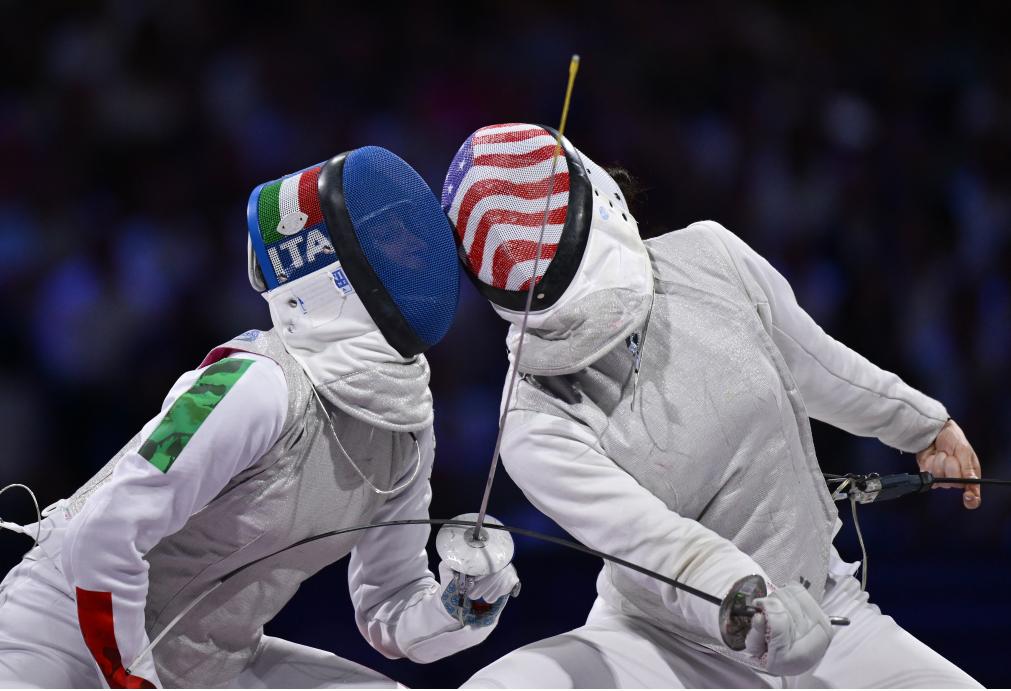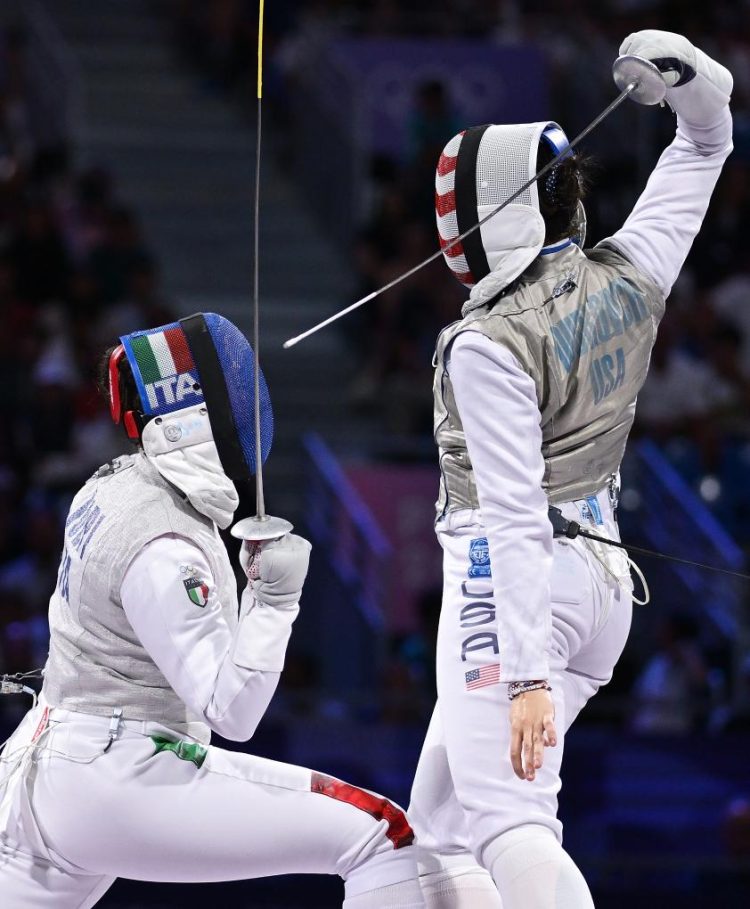Introduction: The State of U.S. Fencing
The United States fencing team has a long and storied history in the sport. From early pioneers to contemporary athletes, the U.S. has produced a number of world-class fencers. However, despite these successes, the U.S. has consistently underperformed in international competitions, particularly at major tournaments such as the World Fencing Championships and the Olympic Games. While countries like Italy, France, Russia, and Hungary remain dominant in the sport, the U.S. has struggled to break into the top tier, often failing to challenge these powerhouses for podium positions.
In this article, we will explore the factors contributing to the U.S. fencing team’s struggles on the world stage and what strategic adjustments they must make in order to elevate their performance. We will also look at potential solutions to help the U.S. become more competitive in the global fencing arena.
I. The U.S. Fencing Team’s Strengths and Achievements
Before diving into the reasons behind the U.S. fencing team’s struggles, it’s important to highlight the team’s existing strengths and achievements.
A. Strong Individual Performances
The U.S. has produced elite fencers who have made significant marks in individual events. Mariel Zagunis, a two-time Olympic gold medalist in sabre, is a notable example of American success. She has been one of the world’s best fencers for over a decade, representing the U.S. with distinction on the global stage.
Gerek Meinhardt, a prominent foil fencer, has also enjoyed considerable success, competing in multiple Olympic Games and securing medals in various international competitions. Additionally, Lee Kiefer, another foil fencer, won the gold medal in the Tokyo 2020 Olympics, becoming the first American woman to do so in 109 years.
The U.S. has seen consistent individual success, particularly in foil and sabre, with these athletes often ranking among the best in the world. However, individual success has not been consistently translated into team success at international events.
B. A Growing Talent Pool
In recent years, there has been a noticeable increase in the number of talented young fencers emerging in the U.S., especially from a more diverse range of backgrounds. This has expanded the talent pool and raised the level of competition within the country. The U.S. has invested in grassroots programs and training facilities, which have been crucial for developing future stars in the sport.
II. Why Does the U.S. Fencing Team Struggle in International Competitions?
Despite these individual successes and growing talent, the U.S. fencing team consistently faces challenges on the international stage. Several factors contribute to their struggles:
A. Lack of Depth in Talent Across All Disciplines
While the U.S. has individual stars in foil and sabre, the team as a whole lacks the depth that other top-tier nations have. For example, countries like Italy and France consistently field multiple fencers who can challenge for podium finishes across all three fencing disciplines: foil, epee, and sabre. The U.S., in comparison, often lacks consistent performers across all categories, especially in epee, where they have not had a standout presence at the top levels of international competition in recent years.
B. Coaching and Training Methodologies
Another significant challenge for the U.S. fencing team lies in its coaching systems. Fencing is a highly technical and strategic sport, requiring years of specialized training to perfect skills, develop tactics, and understand opponents’ psychological tendencies. Countries with dominant fencing programs, like France, Russia, and Italy, have robust systems that integrate elite coaches, top-tier facilities, and a strong national network of clubs that help produce world-class athletes.
While the U.S. has some world-class coaches, it has struggled to maintain consistency in coaching methodologies across the entire program. The fragmented nature of the U.S. fencing scene, where athletes often train in private clubs or independently, has led to disparities in the quality of coaching and the overall effectiveness of training. This lack of a cohesive, nationwide coaching philosophy may hinder the overall development of talent.
C. Insufficient Team Chemistry and Coordination
Team events are a major component of international competitions, yet the U.S. fencing team has struggled to find the right team chemistry in these formats. Team events in fencing, where each member competes against opponents from different countries in a relay-style format, demand a high level of coordination, support, and strategic thinking. Countries with strong fencing traditions excel in this area, as they have well-established team structures and are able to foster cohesion and a winning mentality among team members.
In contrast, the U.S. team, though talented individually, has occasionally shown a lack of synergy in team competitions, which can cost them critical victories. Additionally, pressure during these team events can sometimes result in mental lapses and underperformance.
D. Mental Toughness and Consistency
Fencing is as much a mental battle as it is a physical one. The ability to perform under pressure, maintain focus, and adapt tactically in the heat of the moment is critical for success at the highest levels. While the U.S. has some talented fencers who excel in individual events, there are moments where mental fragility has impacted their ability to close out key matches.
The ability to stay composed during crucial points, particularly when facing opponents with a wealth of international experience, is a trait that many of the top countries in fencing consistently demonstrate. For the U.S., it is essential to develop this mental strength to challenge the best teams on the global stage.
III. Strategic Adjustments the U.S. Fencing Team Needs to Make
To become more competitive in international fencing competitions and break through the dominance of nations like Italy, France, and Russia, the U.S. fencing team must implement a series of strategic adjustments. These adjustments should be focused on addressing the team’s shortcomings while building upon its existing strengths.
A. Establishing Stronger National Training Systems
One of the most important strategic adjustments is creating a unified national training system that provides consistency and quality control across all levels of the sport. This would involve aligning coaching methods across the country, creating a clear pathway from youth programs to elite level training, and improving collaboration between private clubs and national governing bodies.
By centralizing training programs, the U.S. can ensure that all athletes have access to the best facilities, coaching, and resources. This would foster a more cohesive and systematic development process for young fencers, improving the overall level of performance across all three disciplines.

B. Fostering Team Chemistry Through Regular Team Camps and Competitions
The U.S. fencing team should place greater emphasis on team cohesion, especially for team events. Regular team training camps, competitions, and tactical workshops will help improve communication, coordination, and overall team dynamics. Creating a sense of unity among team members will allow them to perform better under pressure and improve their chances in international competitions.
Building team chemistry and trust can also improve the team’s psychological resilience, which is key in high-stakes tournaments. The U.S. should look to train as a unit more regularly, especially when preparing for team-based events at the World Cup and Olympic levels.
C. Mental Toughness and Focus Training
To address the mental challenges faced by the U.S. team, incorporating sports psychology into training is essential. Mental toughness, focus, and resilience should be just as prioritized as physical skills. Implementing a comprehensive psychological training program will allow athletes to better handle pressure, stay composed during critical moments, and improve their overall consistency.
Athletes should engage in mindfulness training, visualization techniques, and stress management exercises to enhance their mental fortitude. By developing these mental skills, U.S. fencers can better handle the pressure of competing against top-tier opponents and improve their performance in close matches.
D. Investing in Epee and Women’s Fencing
For the U.S. to compete with the dominant nations, it must focus on developing a stronger presence in epee and women’s fencing. While the U.S. has seen success in foil and sabre, the depth of talent in epee has been lacking. Encouraging more participation in epee, as well as providing better training opportunities, will help fill this gap and strengthen the team across all disciplines.
In women’s fencing, more support should be given to creating a deeper pool of talent, especially in foil and sabre. Programs targeting young female athletes in particular will ensure that the U.S. remains competitive across both men’s and women’s categories.
IV. Conclusion: Can the U.S. Fencing Team Become a World Leader?
While the U.S. fencing team has had notable individual successes, it faces significant challenges in competing against the top fencing nations. However, with the right strategic adjustments—such as creating a unified training system, improving team chemistry, enhancing mental toughness, and addressing weaknesses in specific disciplines—the U.S. team can become a much more competitive force on the international stage.
By investing in these areas and fostering a more consistent and well-rounded program, the U.S. can potentially rise to the level of the dominant fencing nations, ensuring they are contenders for podium spots in future World Cup and Olympic events.


































Discussion about this post